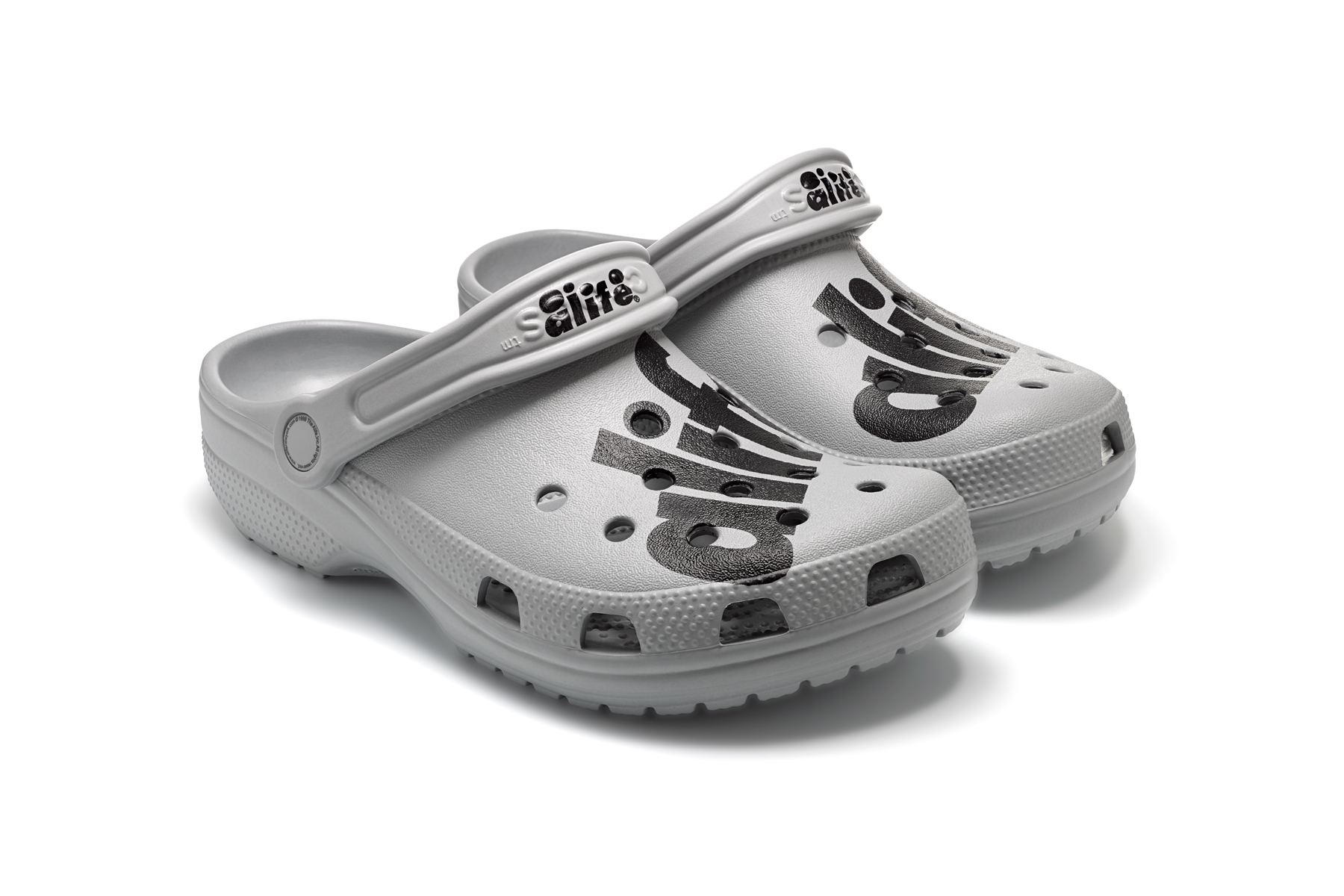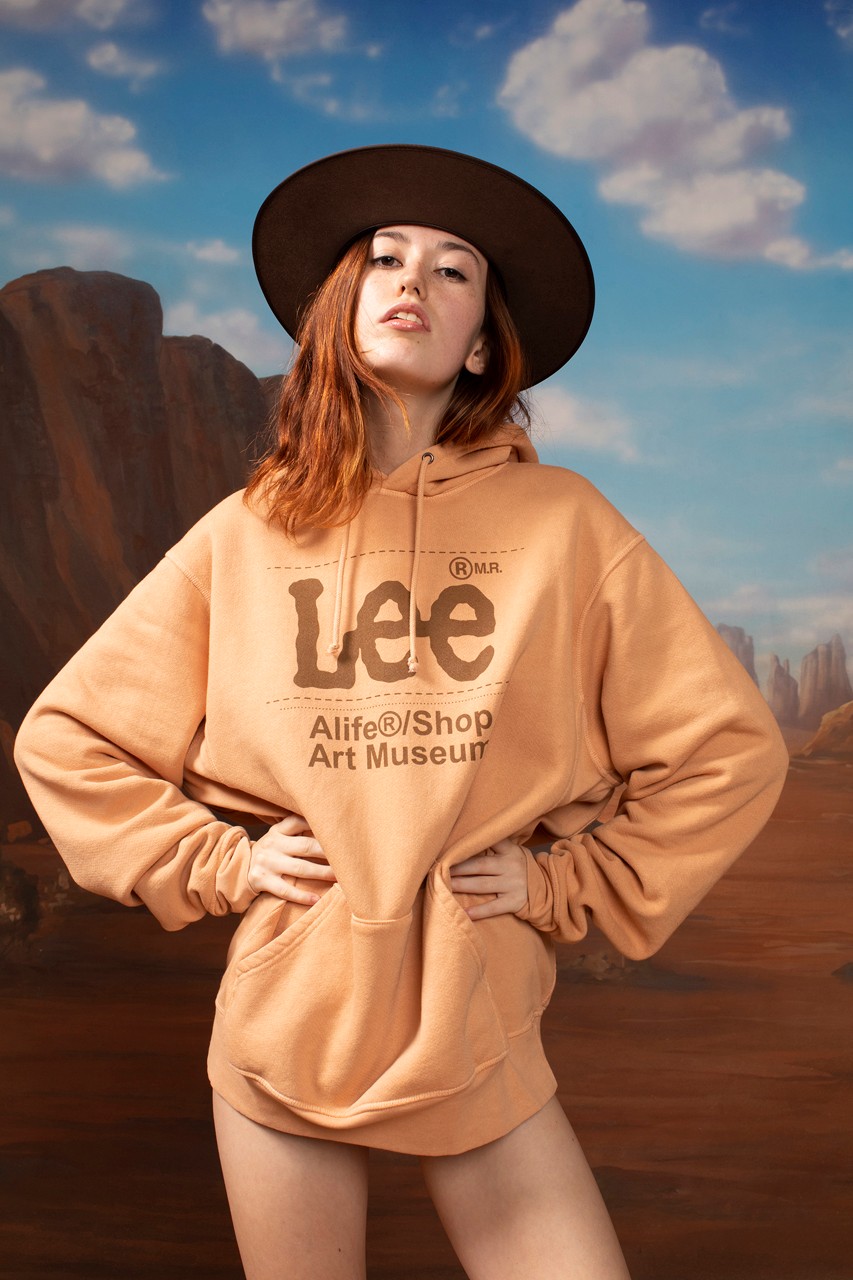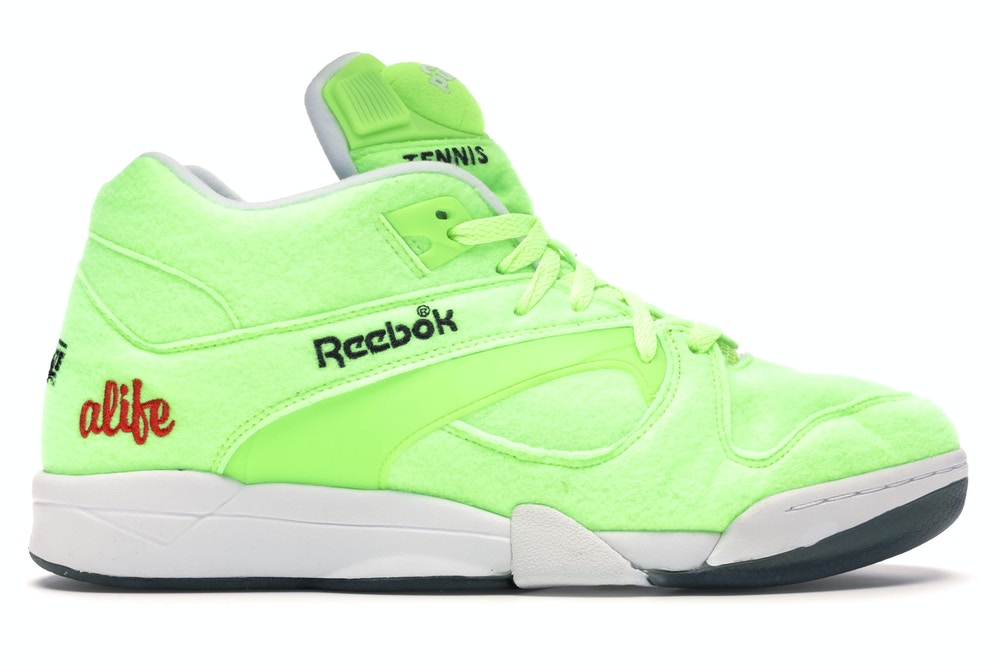For over 20 years, Alife has been playing a part in shaping modern streetwear. The brand’s unapologetically daring design ethos leaves no idea untouched, so long as it resonates with the brand’s core — Tony Arcabascio, Tammy Brainard, Rob Cristofaro, and Arnaud Delecolle. If those four think something’s cool, they run with it. Fearlessly.
Alife originally started as an art collective and workshop for its founders and their graffiti writing friends to flex their creative muscles. Eventually, the crew branched out into the streetwear scene, opening up one of New York’s first high-profile sneaker boutiques, the Alife Rivington Club, where the label would drop collaborations with Nike, PUMA, Reebok, and Adidas. Those splashy collabs soon started to attract around-the-block lines and the type of fanfare that has become a pillar of modern sneaker culture. But Alife never rested on hype alone. They soon began hosting concerts in the Rivington space, attracting talent as varied as John Mayer, Drake, and King Krule.
Alife walked — and by “walked” we mean “presented sneakers in a London tailor shop-inspired boutique” — so that the kids at ComplexCon could run. Their position in steetwear history (and present day) is impossible to argue with. To honor that, we sat down (via Zoom) with Alife founder and Chief Creative Officer Rob Cristofaro and chatted about how the brand helped to shape modern sneaker culture, why they decided to drop a Croc collab (back before the intentionally dorky rubber clogs were seen as “…kind of cool?”), and where fans can expect things to go next.
—
The Alife Rivington store, which helped to create modern sneaker culture thanks to its high-profile drops, had this kind of London tailor shop vibe. What made you guys want to present footwear in that way?
It was really just the juxtaposition of a high-end environment in a neighborhood that was really nothing like it. And also, the product that was being offered wasn’t this thousand-dollar suit or whatever. It was really just some of the same products that you would find a block over on Delancey Street, just reimagined in this new environment. So it was really designed to give people an experience where they would walk into this place and be in a totally different world.
That was really the thought behind it — to create this environment that was like nothing at the time.
The brand has a rich history of collaboration, from Nike to Wu-Tang Clan. How did that become such an integral part of what you’ve been building?
I think when we first started doing that, it wasn’t really going on as often. A lot of the co-branded stuff that we had done with a lot of these partners — from Adidas to Levi’s to whomever — a lot of it was their first-time co-branding with other people. It was the first time that they had really put another brand on their product. So it was really before all the hoopla of co-branding even existed, which was the beauty of it. We were kind of able to pick and chose relevant partners to do that with.
Whereas nowadays… the concept has been beaten to death.
So Alife was choosing brands based on what spoke to you guys personally?
Yeah, it was all based upon the personalities of the four people behind the brand, so there were four different things happening. But footwear was always a big part of what we were doing, which still rings true today. The people that we work with are all relevant to us in a personal way.
When did Alife realize that the sneaker scene was going to get as big as it has gotten? Was there ever a point where you guys knew, “Oh, this is really going to be a thing!”? Or was it all just kind of a surprise?
It was really when we were given sneakers from Nike, it was a new product that they brought up to our studio and unveiled. And it was like, “Wow.” For us to say, “Wow,” it was something important and something that we hadn’t seen or something that was not on the market. So they basically came out with a product that was really brand new. Because at the time it was Adidas Shell Toes, it was Puma Clyde’s, it’s all the sneakers that you’ve been seeing forever. And then they came out with this sneaker that was really like nothing that was out before. And it was a techie shoe, it was Nike, it was all their technology that they used. And it was something that was not on the market at all.
Then the ability to just launch that product to our audience. That was the first time that we saw people line up outside the store for products. As soon as we saw that, we knew — and I think we only had 30 or 40 pairs which were given to us to seed. But that was Nike’s whole thing, was to let us kind of release these things to our audience at the time. And right from that day, from the day that we saw the feedback of the people that were receiving this product, we said, “Oh shit, we’re going to build a space that was designated to sneakers only.”
That’s when we built the Rivington Club, and that was 2001. So we were probably releasing Nike’s early 2001, late 2000, something like that.

I want to talk a little bit about the Alife Croc. In an interview with Uproxx Style Editor Eli Gesner, I heard that you told him it was kind of a “Fuck you,” to sneaker culture. Why did you guys feel like you needed to be the ones to make that statement? And do you feel guilty that you may have inadvertently made Crocs cool?
I think just the whole culture has been so quick to jump on all of these footwear trends and sneaker trends that it gets boring in a way. And everybody’s doing the same thing. Everybody’s co-branding the same shit. It got to a point of nothing new really happening. Also, we feel that we played a pretty important role in what has become the footwear industry. And when you get almost, I don’t want to say blacklisted, but I will kind of say blacklisted, by a brand like Nike, where we can’t get the product anymore, when we’ve played such a pivotal role in what has become of them, it’s kind of like a “Fuck you,” to us.
For me personally, I’m not really afraid to touch certain brands that are taboo in our industry. A lot of these other brands won’t touch something unless other people do it first, but that’s something that we’ve always been keen on. We don’t really give a fuck about if other people like it or if they don’t like it. If it has some kind of relevance to us, anybody in our camp, then it’s a discussion and if it’s worthwhile, we go from there. And Crocs, in the streetwear game, especially before it became a cool thing, was taboo. People would never, ever wear that shit.
So you look at it now and every month there’s a new Croc with a hip brand. A lot of times we’re ahead of the curve, which is kind of not always the greatest — because we’re the guinea pig and we test the market kind of. And a lot of times we’re early in the trend and people don’t always necessarily get it. So it doesn’t always necessarily translate to dollars at that point. But then you look at it a year away from what we did, and usually, these brands that we work with become part of the culture in some way.
One of the things that I think is cool about the brand is, you guys seem to have this secret language within your own group, like the Crocs being a, “Fuck you,” to sneaker culture, or Espo putting secret messages under the insoles of the Air Woven. How often do Alife collabs have kind of a secret dialogue between the creators that is only known to you guys, and where does that tradition come from?
I think a lot of it is being an independent entity and not really having to have too many cooks in the kitchen. I think when we have an idea, we do it, and we usually do it pretty quickly. A lot of the ideas are kind of authentic and things that we live by. So, whether it’s working with a brand like Lee, who really is not relevant in our world of streetwear but to us it is relevant because we grew up on it and it was part of my youth — a lot of this stuff that I tap into stems from something personal.
A lot of times we want to create pieces that are going to make noise, marketable noise. Where it looks beautiful, it looks crazy, it’s going to generate talk. Sometimes it’s hard to wear, but it’s all authentic.

The brand has linked up with a lot of different legends. What’s your dream Alife collaboration?
I think what I would like to do in the future is a movie, probably. As far as the co-branded product, it’s all been done. Especially now. You have Virgil — who’s at the top of the game. Anything of any relevance, he’s touching. If he wants to do a Mercedes, he does a Mercedes. If he wanted to do a spacecraft, he would do a spacecraft. It’s all game. So I’m not on that level. Alife hasn’t been on that level, although we were pioneers of this, we’re not there. Right now, I have a project that I would like to come to fruition at some point, and it would be an Alife product, but the product is going to be a film.
And it’s going to be a film about authentic New York City that nobody is going to be able to portray unless they actually lived it and have the actual footage and documentation of it while it happened. That’s what I’m working on. Stuff like that, which is less apparel. All the goodies can be built around a project like that, but that’s the type of project that we’re looking into. Museum stuff. We just did a Henry Chalfant exhibition in The Museum of the Bronx earlier in the year. That was relevant in regard to somebody that played a big role in the graffiti world. So that was a nice opportunity to tap into the museum crowd and do something more contemporary in that world. I like to go to places that people don’t expect to see us.
Are any Alife collabs that stand out to you as something that you’re particularly proud of, or you think looks particularly cool?

Really all of them have a certain place in my heart, because I look at them almost as artwork. Personally, I really could give two shits about fashion. I don’t really care. The bulk of our business is t-shirts and sweatshirts and hats and it’s about the content that you’re putting forth on these products more than, “Oh, the cut of our stuff is so good.” That’s not us. So I think for me to touch all of these huge brands, like a Levi’s, like a Nike, or a Timberland. Crocs has a place, Levi’s has a place. They’re all relevant in their own ways. One that really stands out is the Reebok Court Victory Pump that became a kind of iconic shoe for Reebok and put them on the map at a time when they were really doing nothing. But overall. there’s a lot of pieces I think that we have that are relevant in the game.
